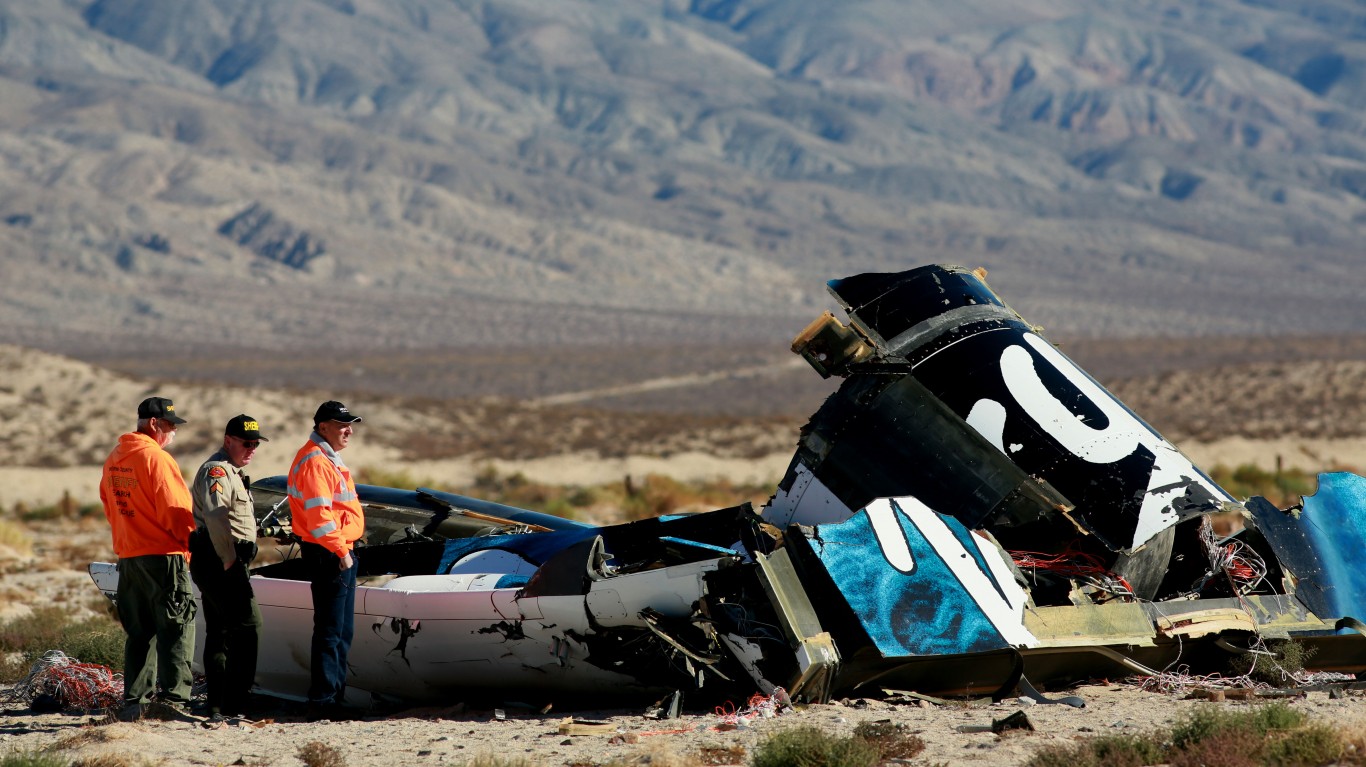
From the extreme temperatures to the lack of oxygen, gravity, and pressure, outer space is incredibly hostile to human life. It takes years of preparation and safety tests to get humans into space, and every step of the way is another chance for fatal errors to occur. Although hundreds of people have successfully visited outer space over the last 70 years, space travel has also seen its fair share of tragedy. (This is the number of space travelers every year since space travel began.)
To determine the worst disasters in space flight history, 24/7 Wall St. utilized a compilation of significant incidents and close calls in human space flight published by the National Aeronautics and Space Administration. The incidents on our list include those that led to injuries or deaths or the loss of missions or vehicles. Medical evacuations were excluded.
During the early days of space travel, the United States and the Soviet Union led the Space Race; hence, the majority of disasters in space flight have taken place in U.S.- and Soviet- or Russian-led projects. Many of the disasters occurred during training incidents in high-oxygen environments where a single spark could ignite a raging fire. Others occurred during launches or during the dangerous re-entry back into the earth’s atmosphere.
Click here to see the worst disasters in space flight history
Not all of the spacecraft involved were designed for entry into outer space. Some were participating in sub-orbital or atmospheric flights, which nevertheless require the use of high Mach speeds and can subject crew members to high g-forces. While some astronauts survived these disasters, as the crew of Apollo 13 famously did in 1970, others experienced in-flight breakup of their vehicles, or devastating crash landings. Here are the largest spacecraft to crash back to earth.
Altitude chamber fire
> Date: March 23, 1961
> Crew size: 1
> Outcome: Loss of crew
While training in an altitude chamber, Soviet cosmonaut Valentin Bondarenko was sterilizing sensor attachment sites on his skin with alcohol pads. One of the discarded pads landed on an electric hot plate and started a vigorous fire that immediately engulfed his suit. Due to the time it took to relieve pressure through bleed valves before the chamber could be opened, rescuers didn’t reach the cosmonaut for minutes and he died in the hospital from his burns.
[in-text-ad]
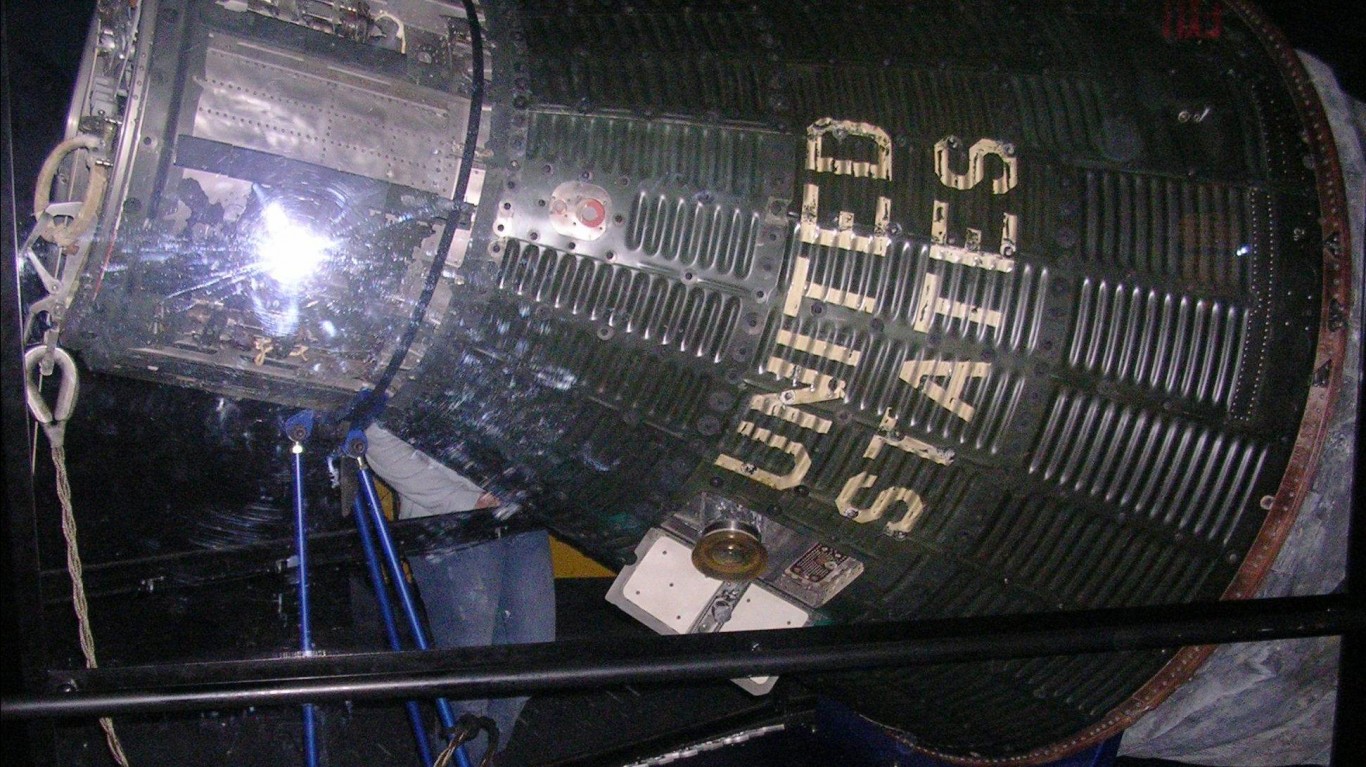
Mercury MR-4 capsule sinking
> Date: July 21, 1961
> Crew size: 1
> Outcome: Loss of capsule
Mercury-Redstone 4, the second U.S. human spaceflight, was manned by astronaut Gus Grissom. The flight went as planned and landed in the Atlantic Ocean after re-entry. When it touched down, however, pyrotechnics fired erroneously and blew the emergency hatch open. As water entered the vessel, nicknamed Liberty Bell 7, Grissom managed to escape. Liberty Bell sank, and Grissom nearly drowned due to a gap in his suit, but was rescued in the nick of time by a Navy helicopter.
Navy altitude chamber fire
> Date: Nov. 17, 1962
> Crew size: 4
> Outcome: Crew injury
During a 14-day Apollo experiment to determine the effects on the human body of breathing pure oxygen at simulated altitudes, four U.S. Navy officers were burned – two seriously – when an electrical fire started at a light fixture. In the 100% oxygen environment, the fire spread quickly from a towel they were using to smother the flames to their clothing.
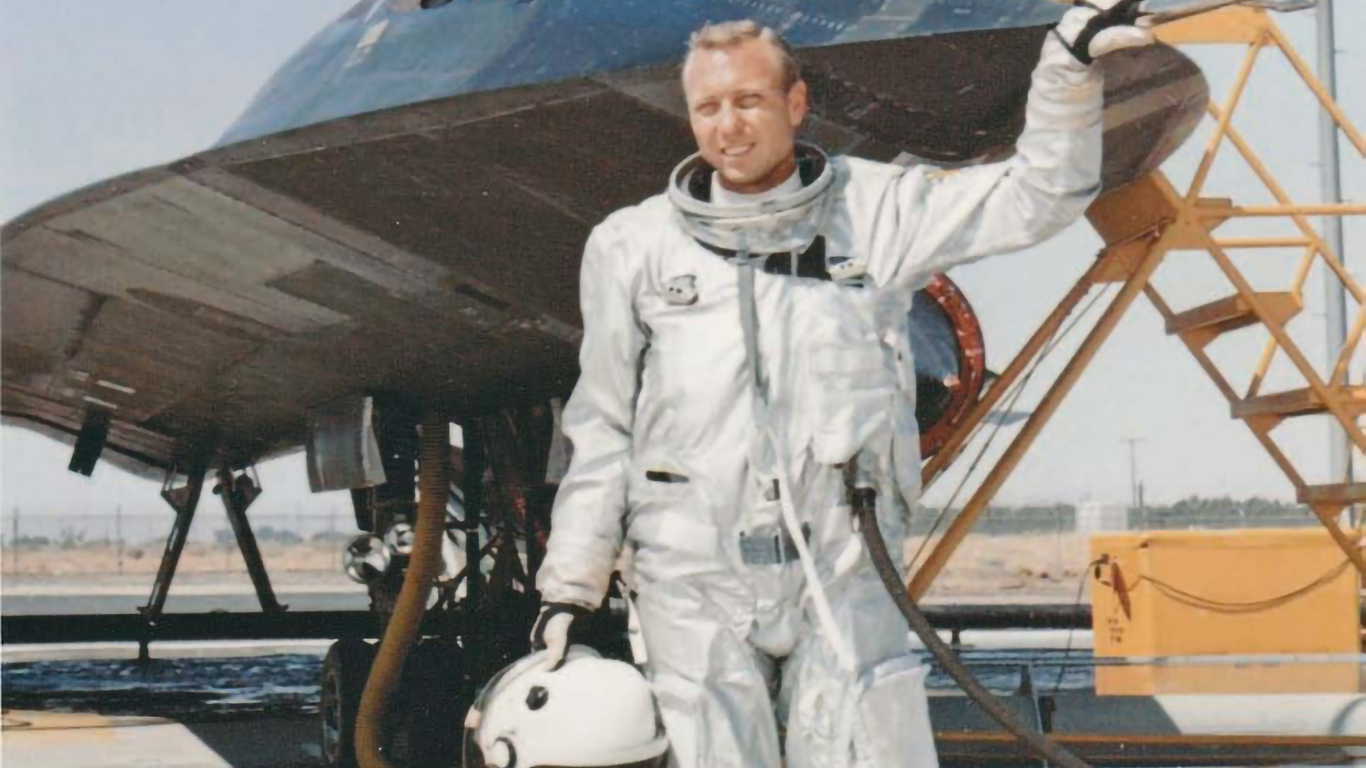
SR-71 breakup
> Date: Jan. 25, 1966
> Crew size: 2
> Outcome: Loss of one crew member
As pilot Bill Weaver and reconnaissance systems officer Jim Zwayer executed a high-speed, high-altitude test flight near Tucumcari, New Mexico, their SR-71 aircraft experienced engine unstart and broke apart mid-flight. Weaver was thrown unconscious from the plane and later regained consciousness and successfully landed in his parachute. Zwayer likely died immediately during the high g-force bailout.
[in-text-ad-2]
M21-D21 collision
> Date: July 30, 1966
> Crew size: 2
> Outcome: Loss of one crew member
The M-21 mothership was designed to launch the D-21 supersonic reconnaissance drone. During a test launch, one of the only two M-21 ships ever built broke apart in midair while traveling at Mach speeds after the launched drone failed to gain enough speed to penetrate the shockwave coming off the ship, and instead collided with it. Although pilot Bill Park and launch control officer Ray Torrick both landed safely in the Pacific Ocean, Torrick drowned when his suit took on water.
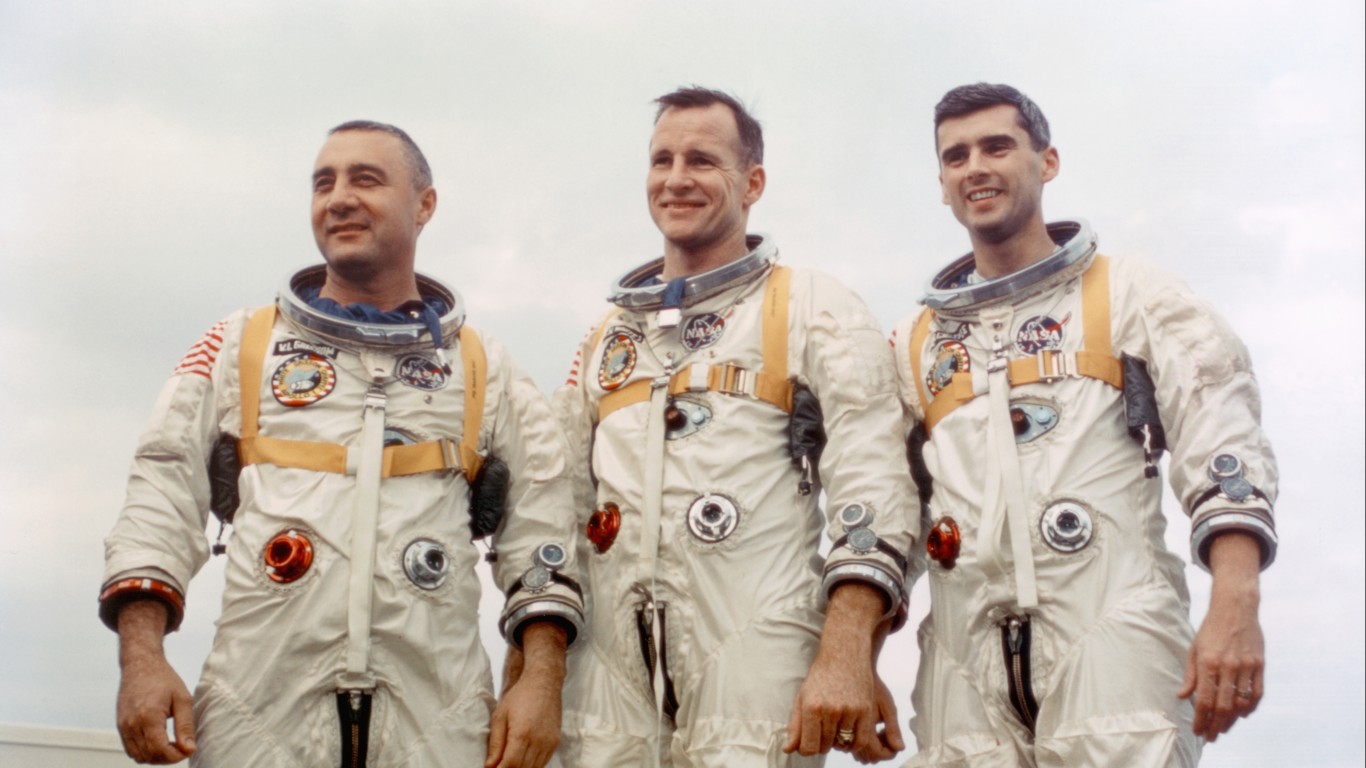
Apollo 1 cabin fire
> Date: Jan. 27, 1967
> Crew size: 3
> Outcome: Loss of crew members
Apollo 1 was America’s first crewed mission aimed at landing humans on the moon. During a test in which the cabin of Apollo 1 was filled with pure pressurized oxygen, an electrical short caused by an unprotected wire broke out. The crew inside could not open the hatch due to the pressure in the room, and teams outside the cabin couldn’t release them due to the extreme heat and smoke. Astronauts Gus Grissom (who had survived the Liberty Bell 7 sinking), Ed White, and Roger Chaffee suffocated to death.
[in-text-ad]
Soyuz 1 crash landing
> Date: April 24, 1967
> Crew size: 1
> Outcome: Loss of crew
Soyuz 1, a Soviet spacecraft with a single crewmember, successfully launched into orbit on April 23, 1967. Unfortunately, one half of the ship’s solar array failed to deploy, leading to a power shortage, and the mission was called off. As cosmonaut Vladimir Komarov manually controlled the crippled ship during re-entry into earth’s atmosphere, the main parachute failed to deploy. The reserve chute then became tangled, leading to a high speed ground impact. Komarov did not survive the crash.
X-15 Breakup
> Date: Nov. 15, 1967
> Crew size: 1
> Outcome: Loss of crew
During a suborbital spaceflight of the joint NASA/USAF experimental X-15 spaceplane, an electrical disturbance possibly led to a slight failure in the aircraft’s control systems, ending with the plane going into a high Mach spin. Pilot Michael Adams successfully maneuvered the plane out of the spin, but it went into an inverted dive and he likely lost consciousness. The aircraft broke apart mid-air and Adams died in the crash.
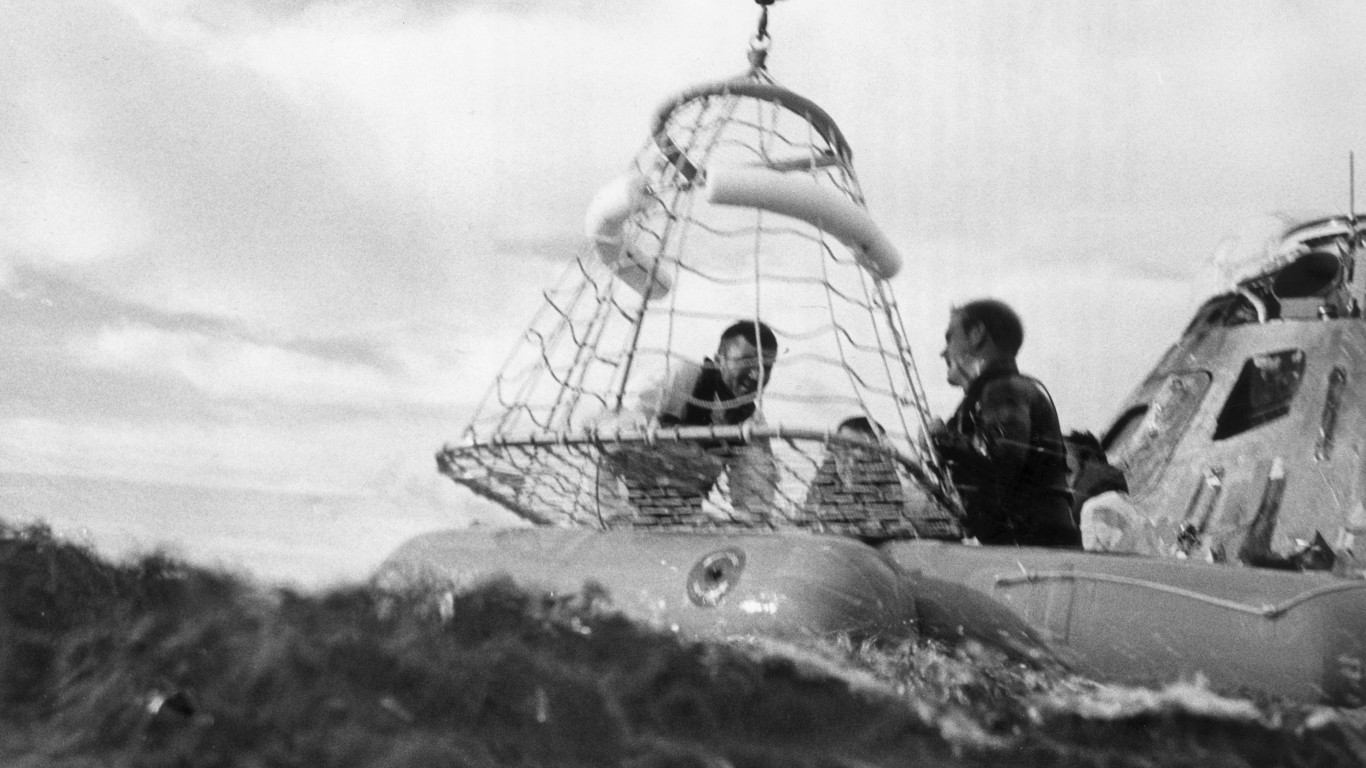
Apollo 13 oxygen tank failure
> Date: April 13, 1970
> Crew size: 3
> Outcome: Loss of mission
Aiming to land on the moon, Apollo 13 launched on April 11, 1970. Two days into the flight, an oxygen tank exploded, venting its contents and the contents of the adjoining tank into space. This led to the loss of all the ship’s fuel cells, crucial oxygen reserves for breathing, and command system power. The crew was able to survive their cold and harrowing trip back by improvising solutions in the lunar module until their successful re-entry. They landed safely in the South Pacific on April 17.
[in-text-ad-2]

Soyuz 11 pyrotechnic failure
> Date: June 30, 1971
> Crew size: 3
> Outcome: Loss of crew
The Soyuz 11 mission was the first and only crewed mission to successfully enter the world’s first space station, Salyut 1. Soviet cosmonauts Georgy Dobrovolsky, Vladislav Volkov, and Viktor Patsayev spent over 20 days on the space station before departing. During their preparation for re-entry, a pyrotechnic failure caused the ship’s breathing vent to open at an altitude of 104 miles, leading to a rapid depressurization that killed the crew within seconds. They remain the only humans to have died while in space.
Soyuz 18-1 electrical failure
> Date: April 5, 1975
> Crew size: 2
> Outcome: Loss of vehicle/mission, crew injury
As the Soviet ship Soyuz 18-1 launched in an attempt to dock at the Salyut 4 space station, an electrical malfunction led to a cascade of problems involving the breakaway parts of the launch booster, which failed to detach from the ship. Safety mechanisms kicked in at 111 miles altitude, finally separating the capsule from the faulty launch vehicle. The crew survived a high g-force re-entry and landed in the Altai Mountains, where the capsule rolled down an incline and stopped just before falling off of a cliff. Commander Vasily Lazarev never fully recovered from his internal injuries, and never went into space again.
[in-text-ad]
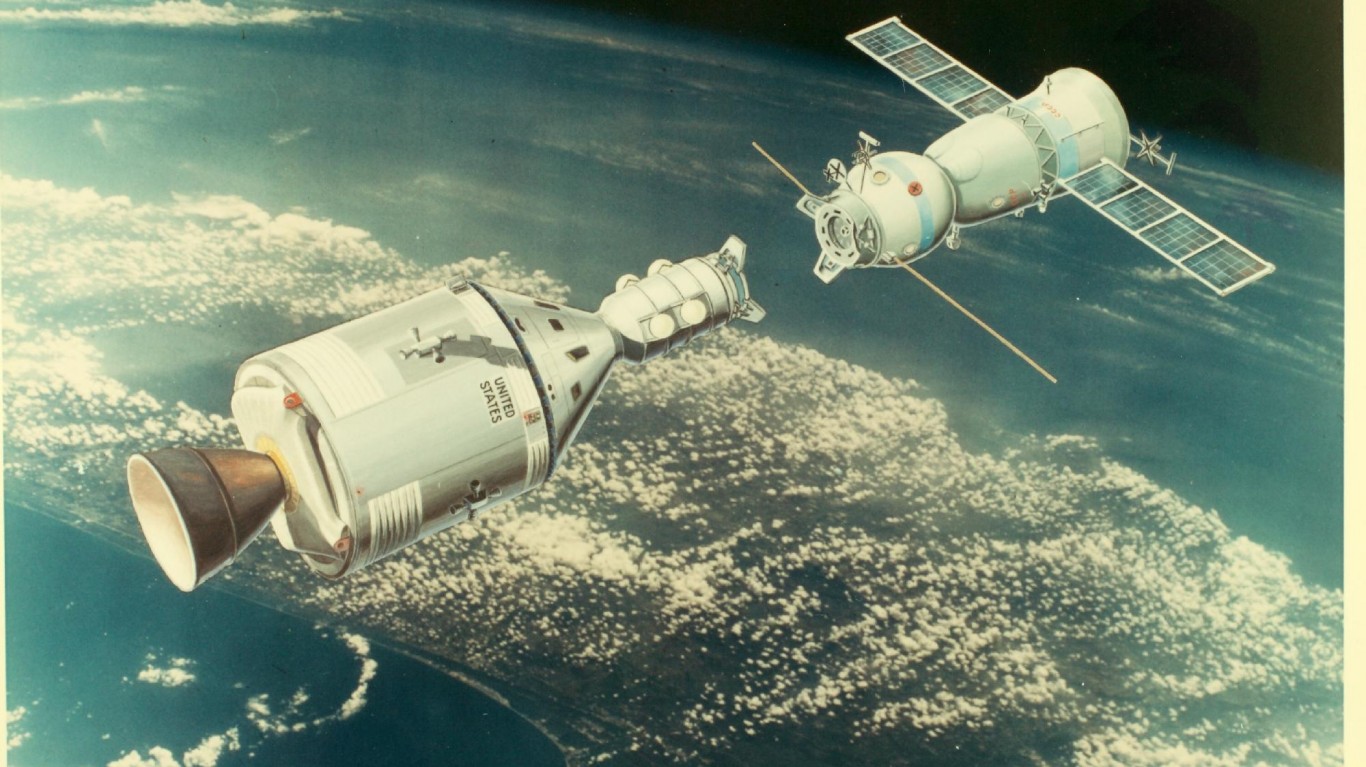
Apollo-Soyuz cabin propellant exposure
> Date: July 24, 1975
> Crew size: 3
> Outcome: Crew injury
The joint U.S.-Soviet Apollo-Soyuz Test Project was the first crewed international space mission. The mission was successful, except for a human error during the landing of the Apollo craft that led to toxic propellant fumes entering the cabin. One member of the crew lost consciousness, but another was able to get an oxygen mask onto him. After landing, the crew spent two weeks hospitalized while they recovered.
Soyuz 23 docking failure
> Date: Oct. 16, 1976
> Crew size: 2
> Outcome: Loss of mission
The mission of Soyuz 23 was to dock on the Salyut 5 space station; however, the automatic docking system malfunctioned during the ship’s approach to the station, and fuel reserves were burned dangerously low. The mission was aborted and the craft re-entered earth’s atmosphere successfully. It landed in the partially frozen Lake Tengiz during a blizzard and sank beneath the surface. The recovery team took nine hours to extract the crew, whom they had assumed to be dead. The two men were cold, but were alive and well.
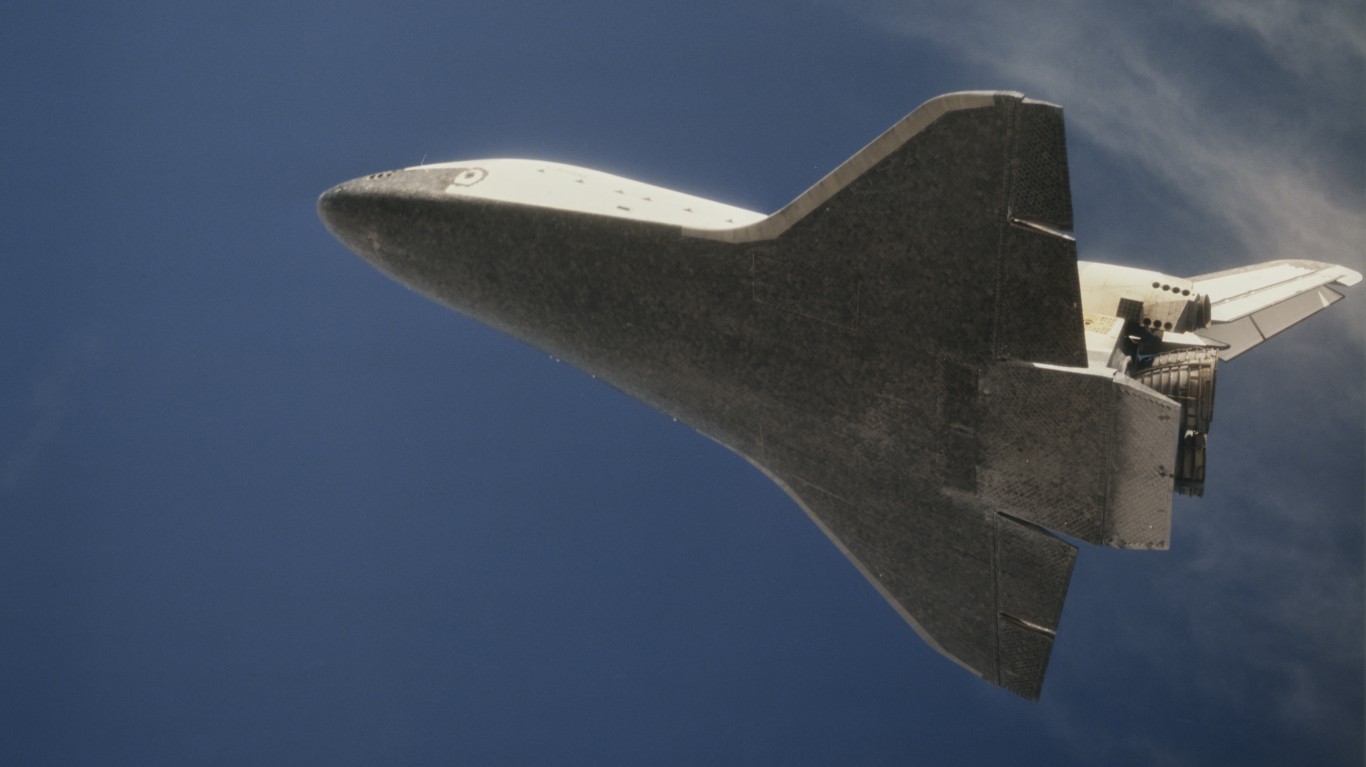
STS-2 fuel cell failure
> Date: Nov. 12, 1981
> Crew size: 2
> Outcome: Crew injury
During a planned five-day orbit, the crew of STS-2 were to test equipment including a shuttle imaging radar system and a robotic arm called Canadarm. The mission was cut to two days when a fuel cell that produced electricity and drinking water malfunctioned, leading to excess hydrogen in the water. When the crew drank the water, it caused them to belch; but belching in zero gravity leads to regurgitation. Hence, the crew stopped drinking and returned severely dehydrated.
[in-text-ad-2]
Soyuz T-10-1 pad booster fire
> Date: Sep. 26, 1983
> Crew size: 2
> Outcome: Loss of vehicle/mission
As Soyuz T-10-1 prepared for liftoff in an attempt to meet up with the Salyut 7 space station, a fuel leak caused the launch vehicle to catch fire. After multiple attempts by both the cabin crew and the ground crew to activate the escape system, it finally activated and detached from the booster seconds before the booster exploded. An emergency parachute deployed and the capsule landed 2.5 miles from the burning launch pad with the crew shaken but uninjured aside from bruises.
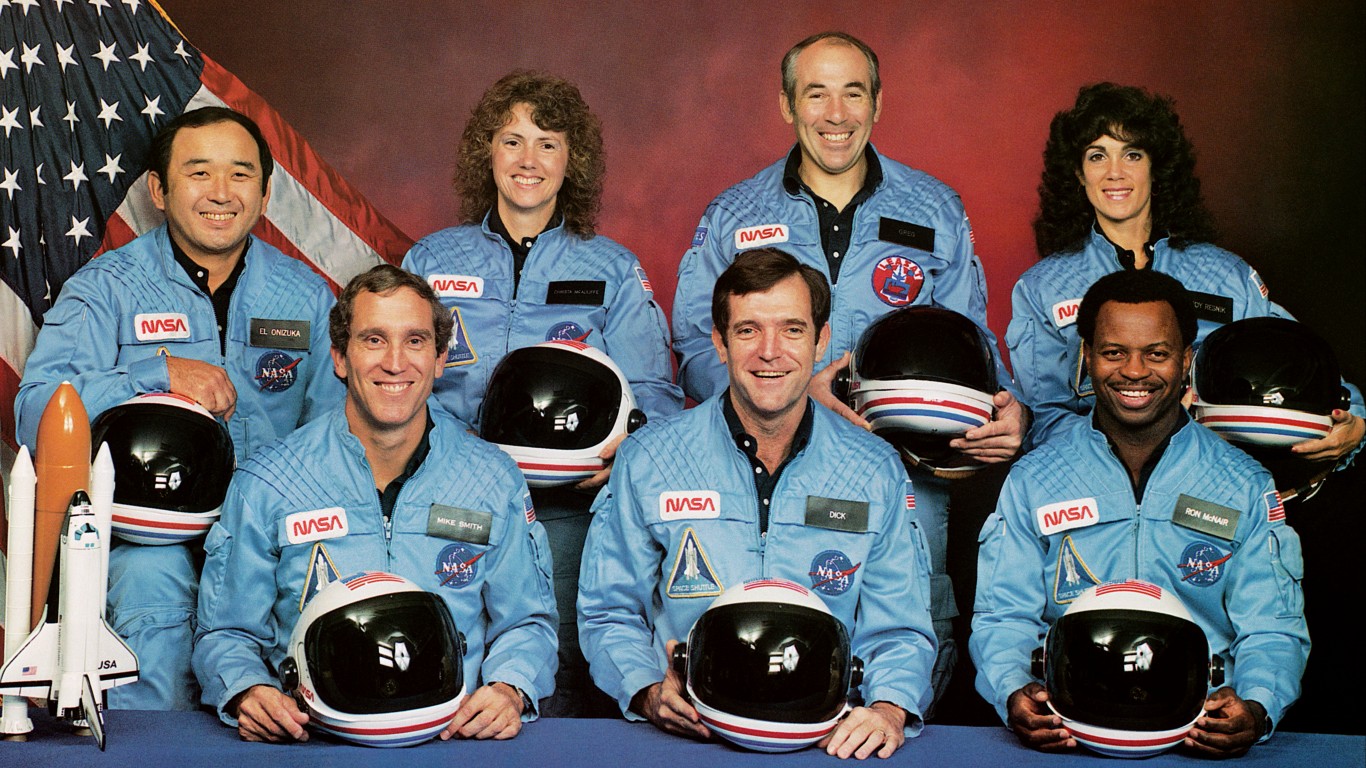
Challenger breakup
> Date: Jan. 28, 1986
> Crew size: 7
> Outcome: Loss of crew
With a crew of seven, including New Hampshire school teacher Christa McAuliffe, the Challenger space shuttle was intended to orbit earth while the astronauts deployed a satellite and studied Halley’s Comet. Faulty seals in one of the rocket boosters led to an explosion just over a minute after liftoff, and the orbiter, traveling at Mach 1.2, was torn apart due to its rapid deceleration. All crew members perished in the disintegration or subsequent landing in the Atlantic.
[in-text-ad]
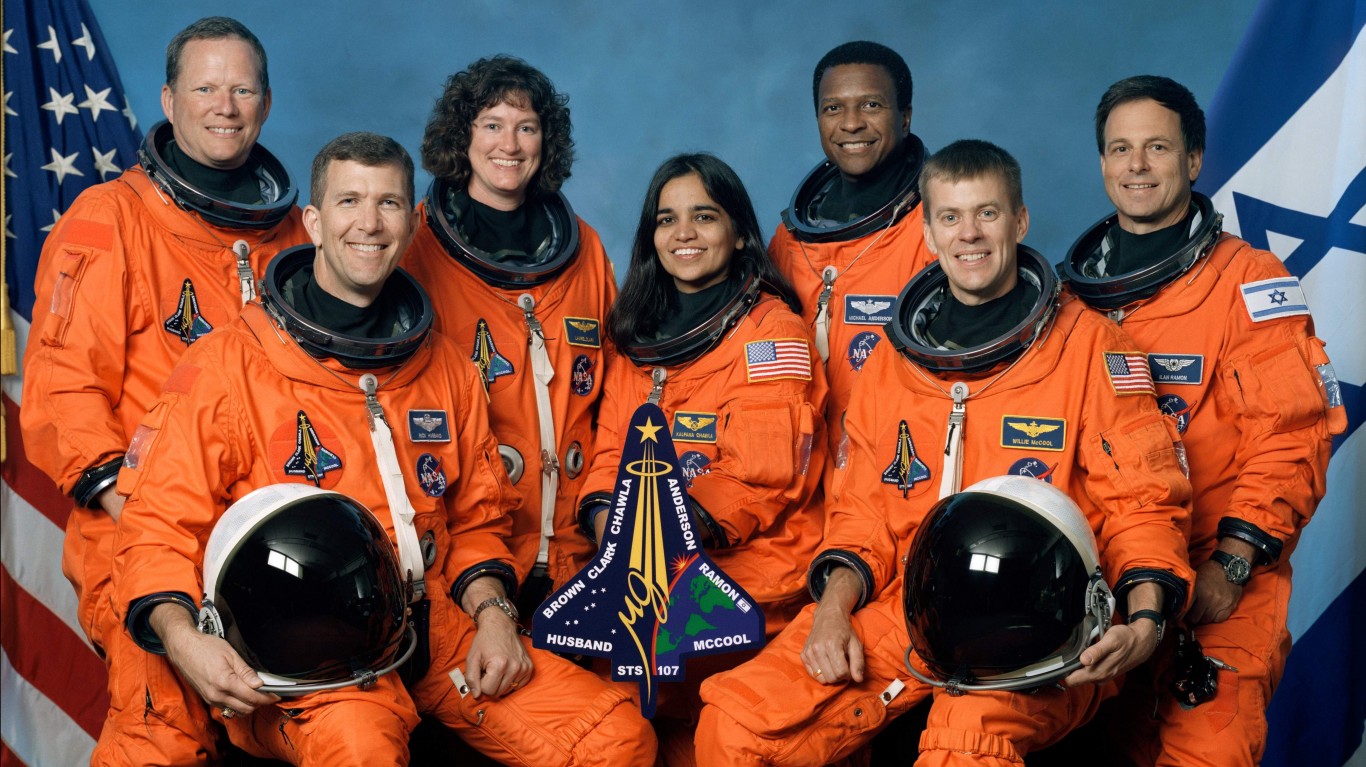
Columbia breakup
> Date: Feb. 1, 2003
> Crew size: 7
> Outcome: Loss of crew
During its launch on Jan. 16, 2003, the Columbia space shuttle was damaged when a piece of foam from its tank broke off and struck the thermal covering on its left wing. The damage went unnoticed and the seven member crew completed a 15-day mission in orbit. During re-entry, the damage became apparent as heat melted through the wing and caused a loss of control that led to the disintegration of the orbiter at 40 miles altitude. All crew members were killed.
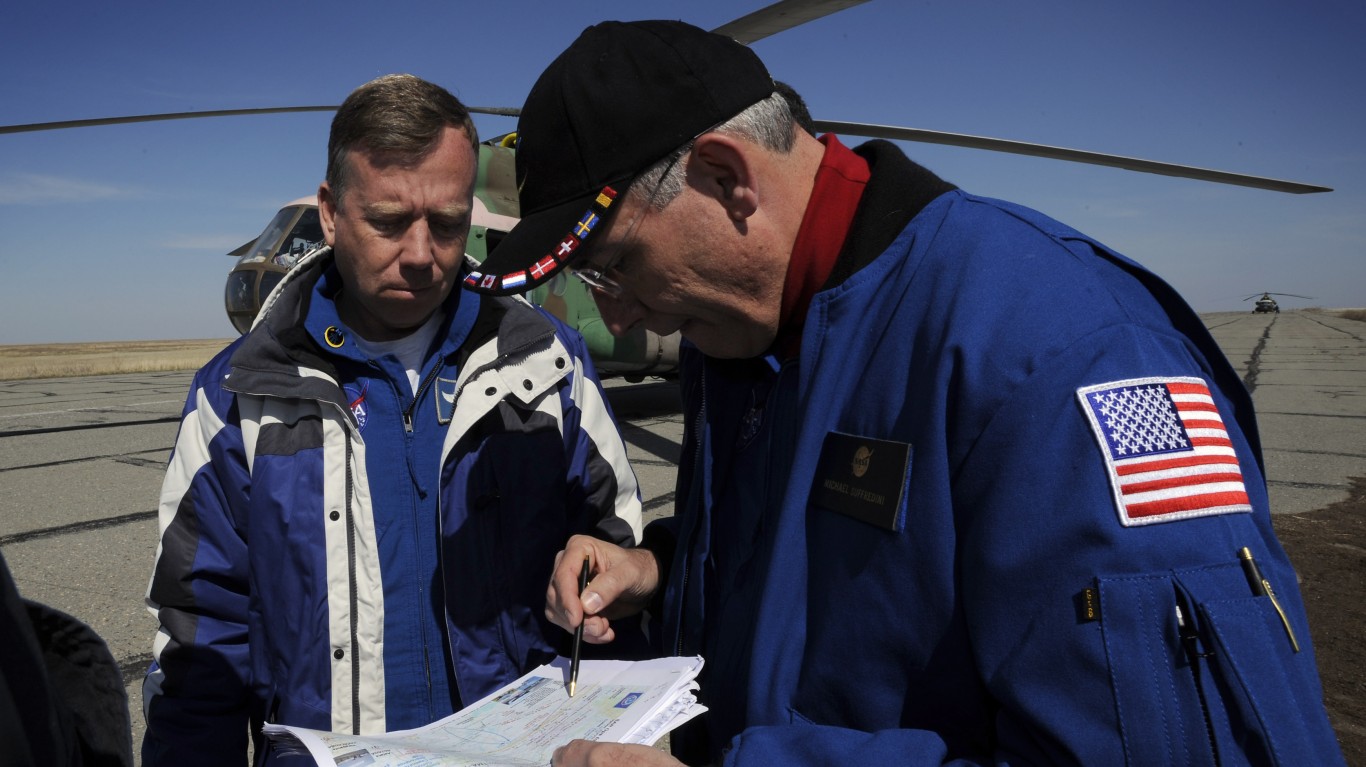
Soyuz TMA-11 ballistic re-entry
> Date: April 19, 2008
> Crew size: 3
> Outcome: Crew injury
After a successful mission to the International Space Station, Soyuz TMA-11 experienced a high g-force, ballistic re-entry after the descent module and propulsion module failed to separate from one another. The spacecraft landed nearly 300 miles from its target and the recovery team were delayed in locating it, but the crew survived with only one member being hospitalized for minor injuries.

SpaceShipTwo breakup
> Date: Oct. 31, 2014
> Crew size: 2
> Outcome: Loss of one crew member, injury of the other
SpaceShipTwo is a suborbital space plane meant for space tourism. During a test flight over the Mojave desert, the first SpaceShipTwo was in ascent when a descent mechanism deployed prematurely, causing the ship to break apart in mid-air. The disintegration killed pilot Michael Alsbury and seriously injured the other crewman, who was able to escape the wreckage and deploy his parachute.
Are You Ahead, or Behind on Retirement? (sponsor)
If you’re one of the over 4 Million Americans set to retire this year, you may want to pay attention. Many people have worked their whole lives preparing to retire without ever knowing the answer to the most important question: are you ahead, or behind on your retirement goals?
Don’t make the same mistake. It’s an easy question to answer. A quick conversation with a financial advisor can help you unpack your savings, spending, and goals for your money. With SmartAsset’s free tool, you can connect with vetted financial advisors in minutes.
Why wait? Click here to get started today!
Thank you for reading! Have some feedback for us?
Contact the 24/7 Wall St. editorial team.

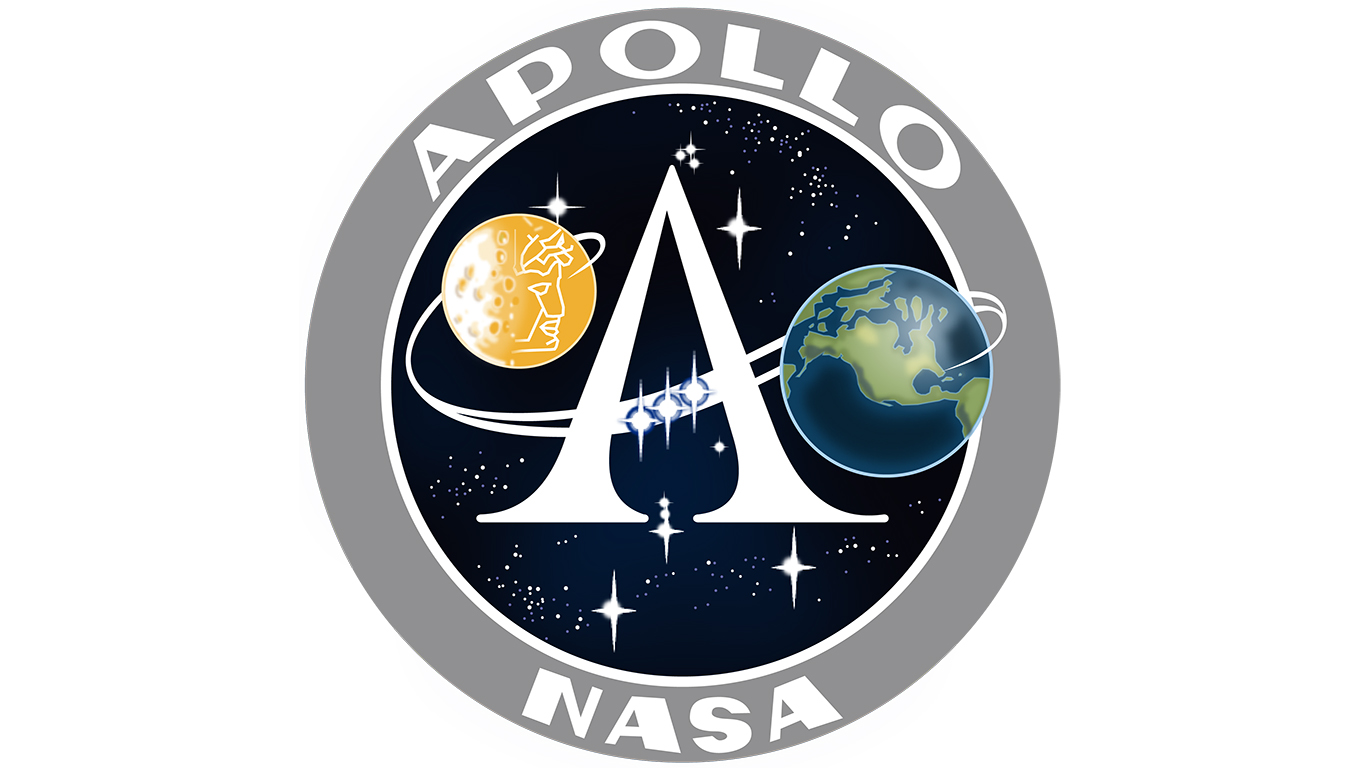
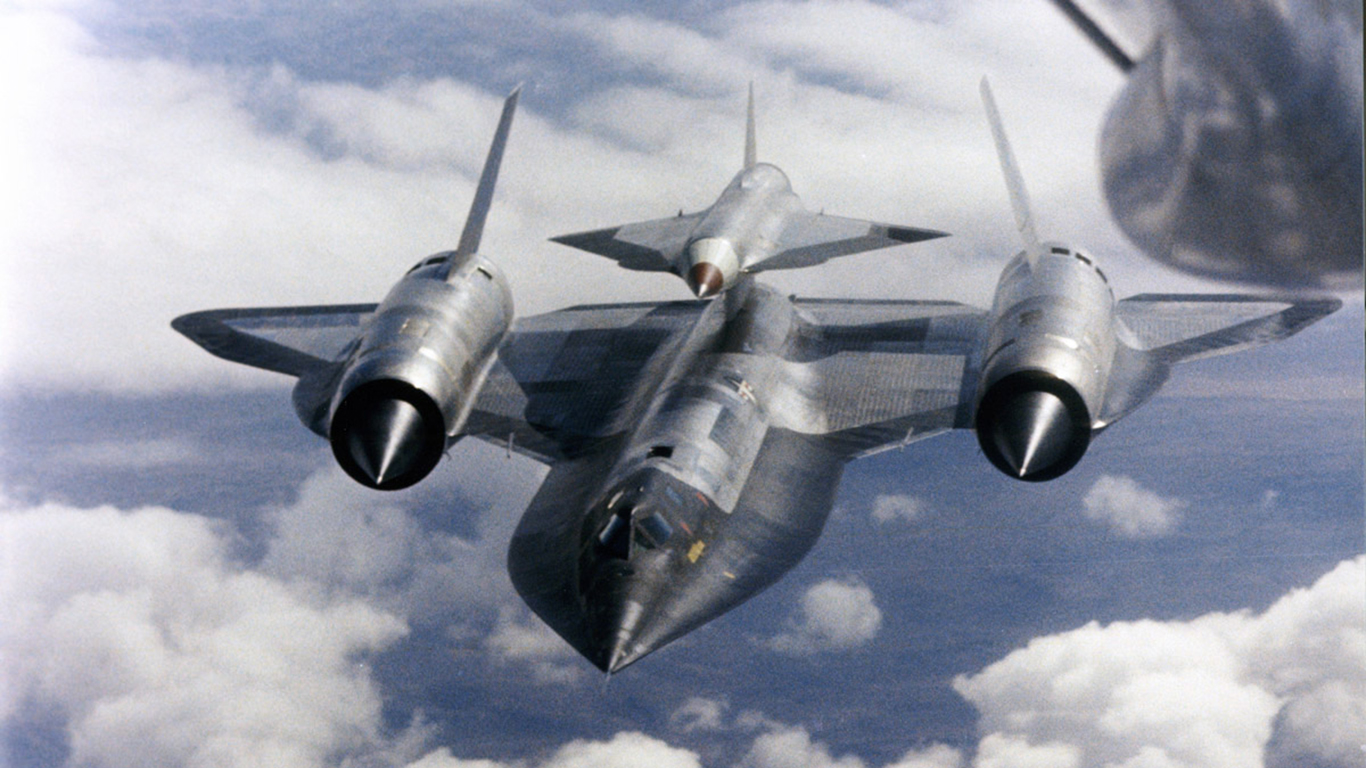
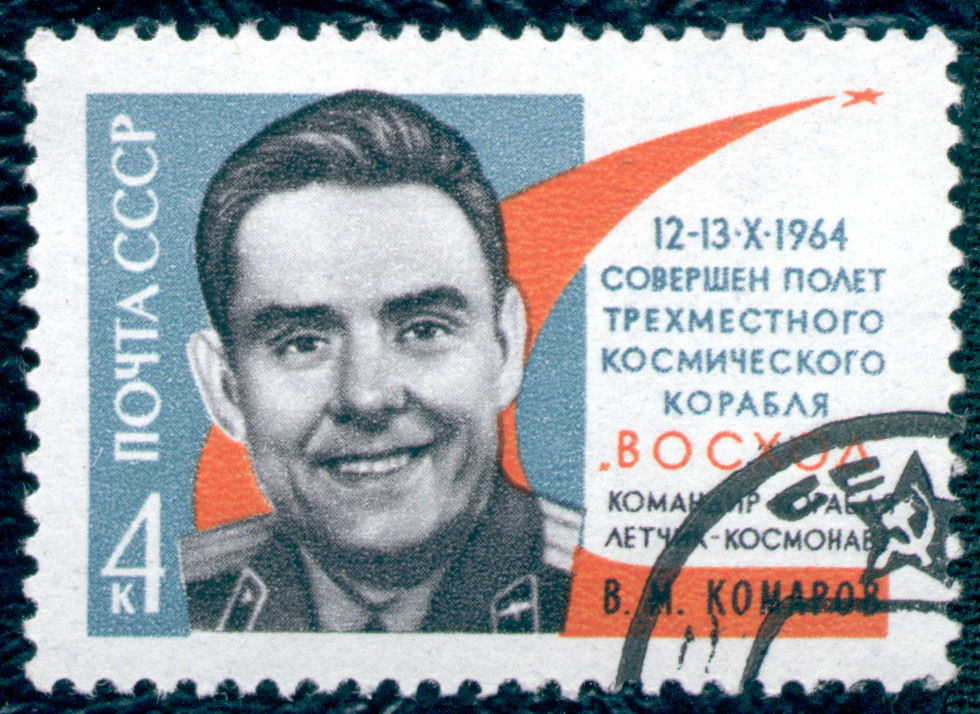

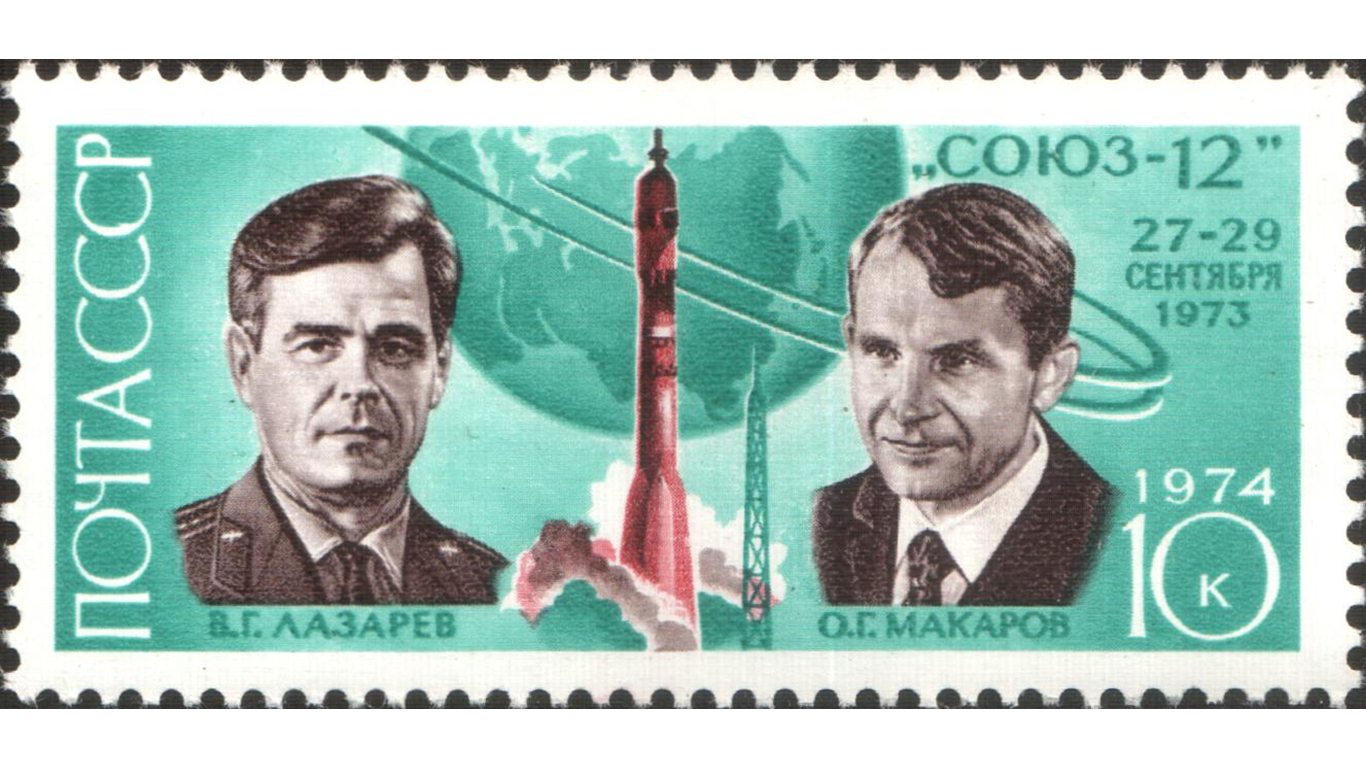
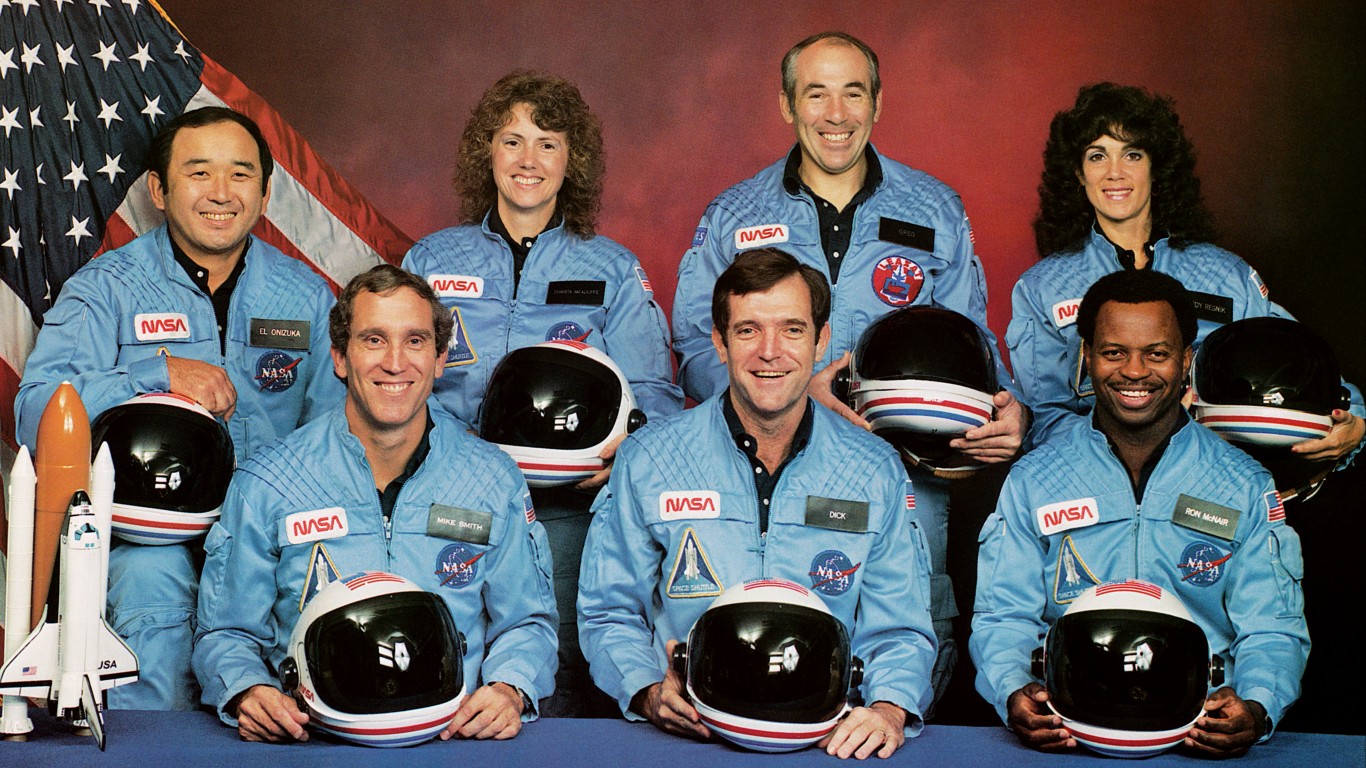 24/7 Wall St.
24/7 Wall St.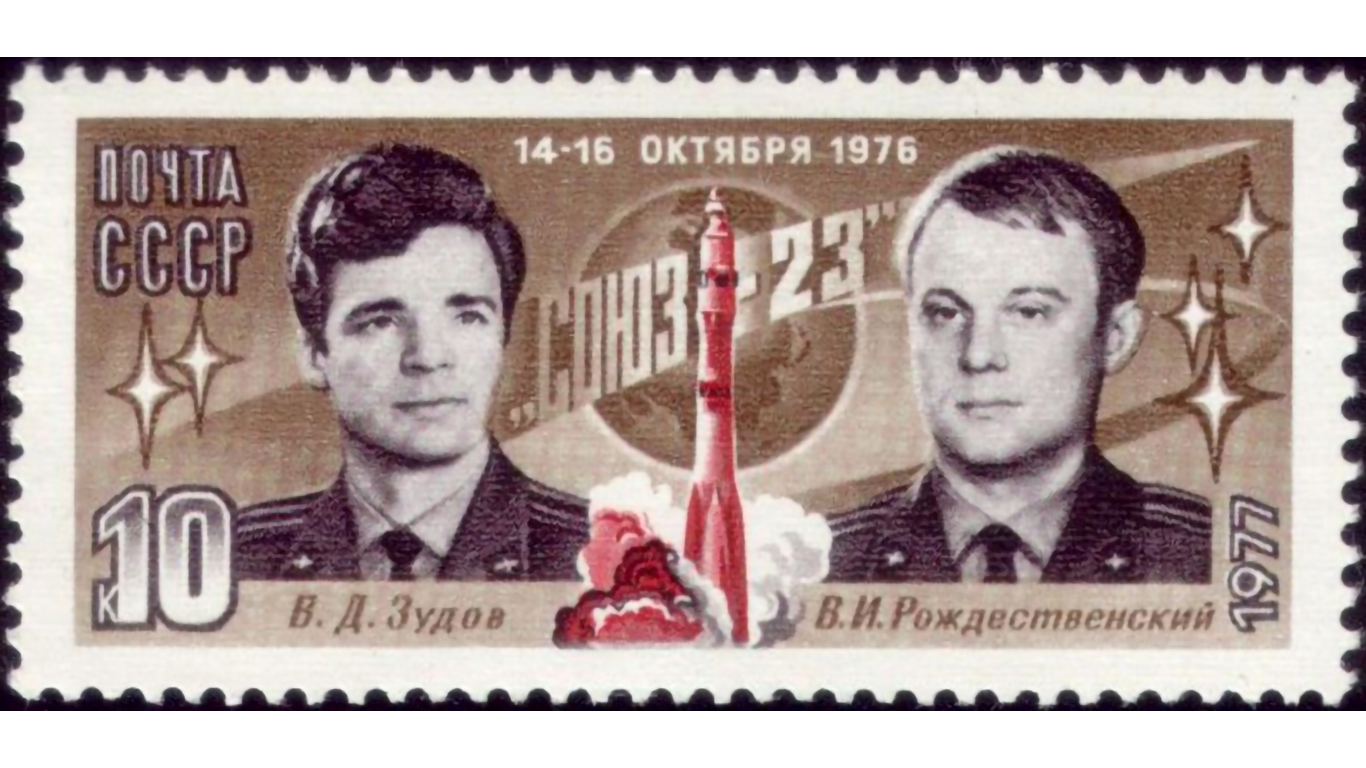
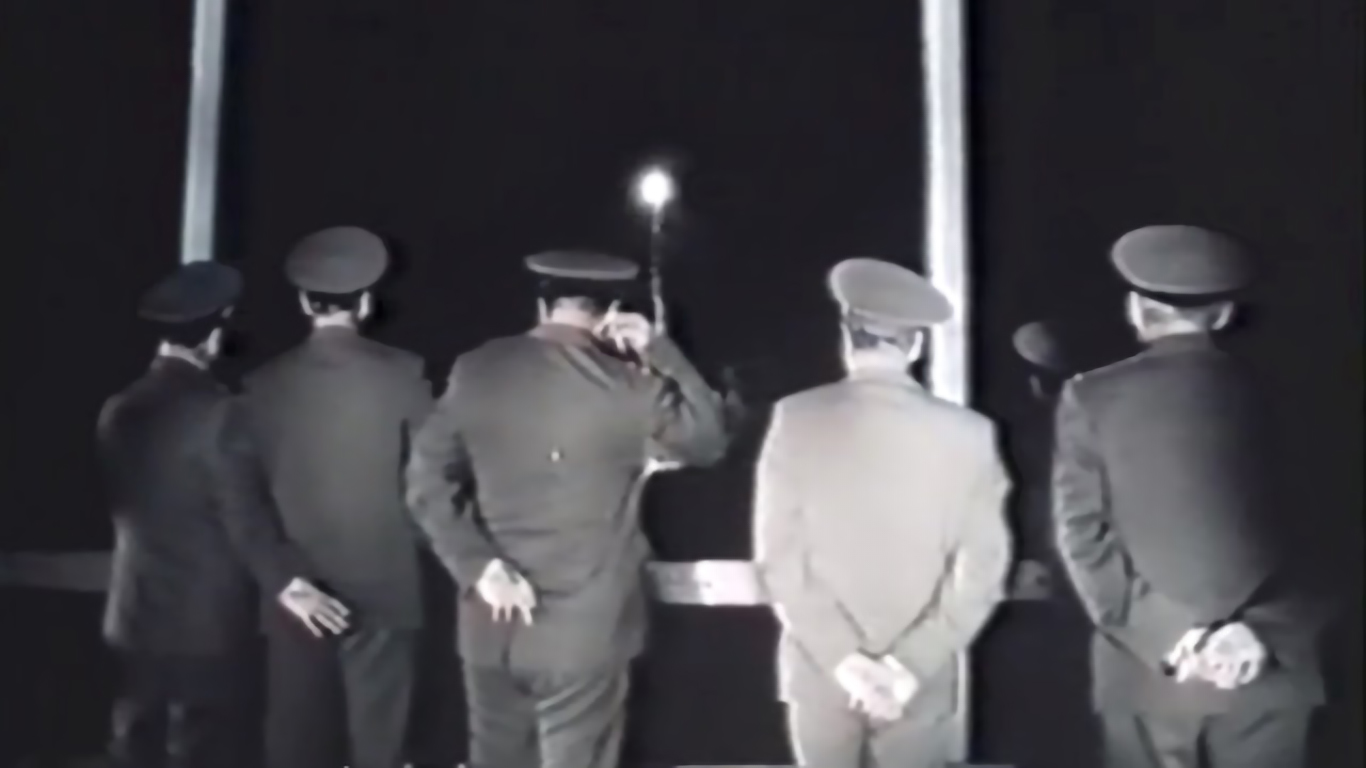
 24/7 Wall St.
24/7 Wall St.